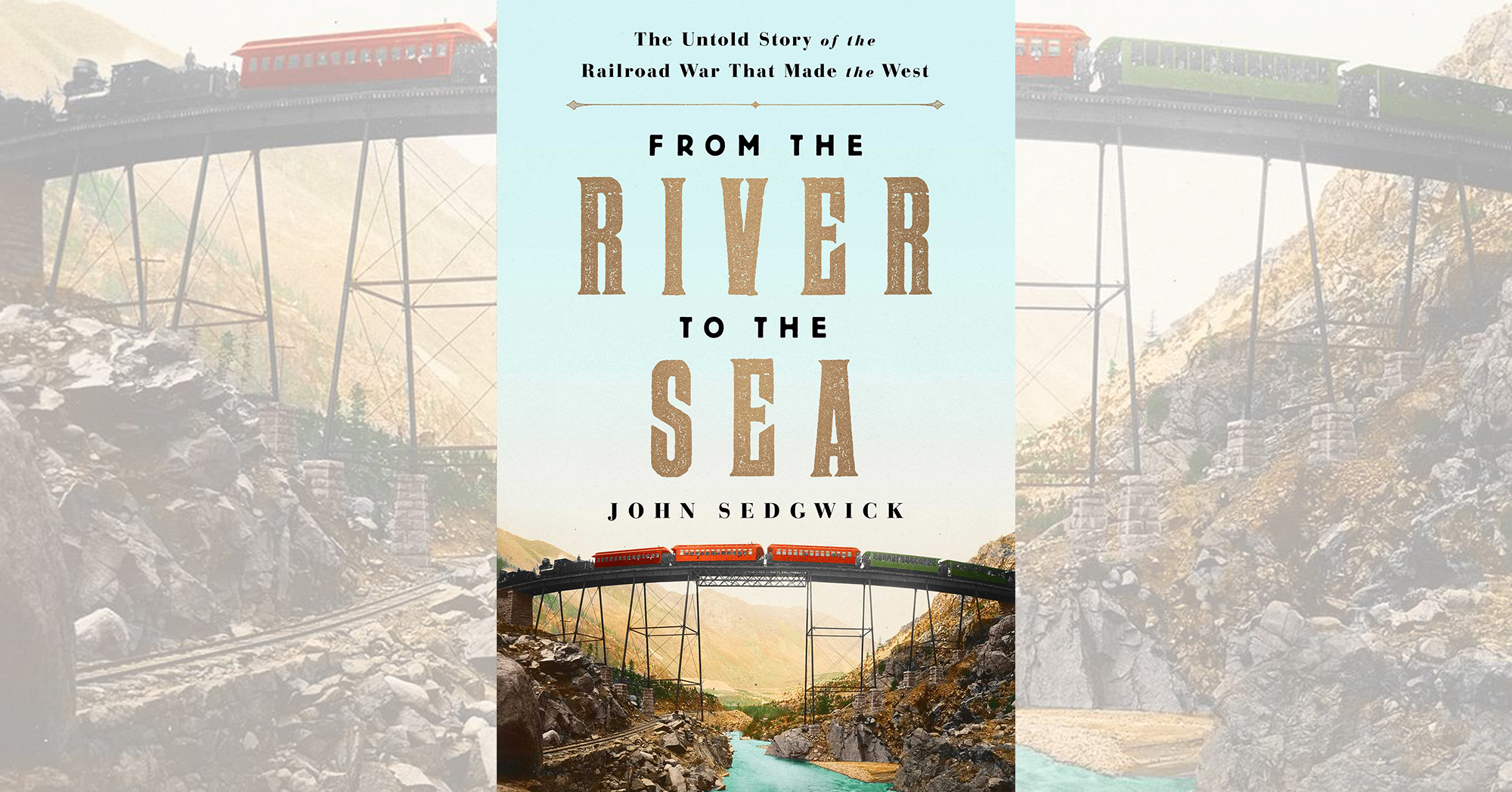From the River to the Sea: The Untold Story of the Railroad War That Made the West, by John Sedgwick, Avid Reader Press, New York, 2021, $30
This book’s subtitle isn’t quite accurate: War should be plural, as the battles described as the battles described by the author encompassed different objectives, ranged over the immense Western landscape and traversed the post–Civil War decades. Those battles didn’t, for the most part, unleash actual violence; but they were bureaucratically, legally and emotionally brutal. It was the era of unchecked capitalism, and the West (and points East) figuratively ran with the blood of smart, ambitious and steely businessmen. Building railroad lines and infrastructure, and marketing them, released the beast in ostensibly civilized gentlemen. But the stakes were great. Namely, the future of an industry—and the nation.
The main combatants were William Jackson Palmer (1836–1909) and William Barstow Strong (1837–1914). A Union general in the Civil War, Palmer had a longstanding interest in the relatively new railroad business. In 1870 he co-founded the Denver & Rio Grande Railroad. Strong, who didn’t serve in the military during the war, was also a lifelong railroad man, who made his mark in American history as general manager and, later, president of the Atchison, Topeka & Santa Fe Railway. Both men had one professional goal: to extend their railroads west, from Denver (Palmer) and Kansas City (Strong) to the Pacific Ocean. The first transcontinental railroad, completed in 1869, turned out to be a financial bust. Powell and Strong believed they could do better.
Their bitter, byzantine rivalry established a bizarre bond between them, one forged by hatred, jealousy and disdain (there wasn’t even a smidgen of mutual grudging respect). Palmer had a bit of the romantic in him about his schemes. Strong, whose business motto was “Grow or die,” was the consummate bureaucrat, and as it turned out the bureaucrat managed to snooker the former general virtually every time they fought over property rights, laying railroad tracks (they even disagreed about the width of those tracks), raising cash—anything. If nothing else, the men’s internecine conflict is an object lesson in how personalities can shape important events.
The other two major players in the story are Jay Gould, a phenomenally successful Wall Street power broker who loved owning railroads (his motto was “I don’t build railroads, I buy them”) and Collis Potter Huntington, the most influential of the “Big Four” magnates who dominated the railroad system in California by 1880 and were determined to maintain that control. Gould and Huntington were every bit as ruthless as Palmer and Strong, and dominated them—for a time. Gould, sickly since childhood, died relatively young at age 56, while Strong finally turned the tables on Huntington in a southern California price war and delighted in trouncing him. Eventually, Gould’s brethren, East Coast financiers—Boston and New York City gray eminences—imposed hegemony over the nationwide industry, and they too were merciless toward perceived adversaries.
From the River to the Sea has its shortcomings. It describes so many railroads—emerging, merging, submerging, swaggering and staggering—that readers may have trouble keeping track of them (the maps help). The chronology tends to move sinuously, rather like the shoo-fly engineering technique that “allow[ed] a train to ascend a steep mountainside.” The book could have gone deeper into how American Indians regarded and interacted with railroads, while a fuller discussion of the novel technologies engendered by the challenges of railroad building in the West would have been fun for tech buffs. Despite those shortcomings, the book is engrossing and thought-provoking, well written and diligently researched. Moreover, From the River to the Sea contains fascinating, little-known anecdotes, like the fact Palmer and Strong recruited thugs to join private armies intended to thwart and intimidate competing railroad line construction (the “armies” were more bluster than fighting force). Also that the railroads played a seminal role in transforming Los Angeles into a megalopolis. Little known today, Palmer and Strong, Sedgwick writes, “defined the West and remade a good deal
of the nation too.” The book does justice to those achievements.
—Howard Schneider
This post contains affiliate links. If you buy something through our site, we might earn a commission.





